Search the Blog
Categories
- Books & Reading
- Broadband Buzz
- Census
- Education & Training
- General
- Grants
- Information Resources
- Library Management
- Nebraska Center for the Book
- Nebraska Memories
- Now hiring @ your library
- Preservation
- Pretty Sweet Tech
- Programming
- Public Library Boards of Trustees
- Public Relations
- Talking Book & Braille Service (TBBS)
- Technology
- Uncategorized
- What's Up Doc / Govdocs
- Youth Services
Archives
Subscribe
Author Archives: Mary Sauers
Resources on Copyright & Emergency Remote Teaching & Research

Library Copyright Experts have joined together to provide these resources for higher education, including college, research, community college, and special libraries:
- Statement on Fair Use and Emergency Remote Teaching and Research
- Copyright Office Hours – remote office hours for fellow higher education librarians with questions
- PRACTICAL INFO: Rapidly shifting a course from in-person to online – very high-level overview of the issues from the University of Minnesota (Nancy Sims), Creative Commons licensed, feel free to adapt for your campus – see examples below
- ASERL Webinar: “Yes, You Can Scan That Textbook”
- DATE & TIME: Tuesday, March 17, 2020 at 2pm ET / 1pm Central Time
- REGISTER: https://attendee.gotowebinar.com/register/7222248085692610316
Other resources:
- Kyle K. Courtney blog post on exigent circumstances
- Terry Fisher’s guide to emergency online pedagogy focusing on practices rather than tech from developing CopyrightX
- ICOLC Statement on the Global COVID-19 Pandemic and Its Impact on Library Services and E-Resources
- Vendor Covid-19 Related Donations and Pro Bono Access
- Publishers & Vendors Offering Access for Distance Learning & Research During COVID-19
- Ohio State University Libraries’ Copyright Services resource on Copyright and eLearning
- Privacy for online teaching by Library Freedom Project
Statewide COVID-19 Information Line Opens for Residents
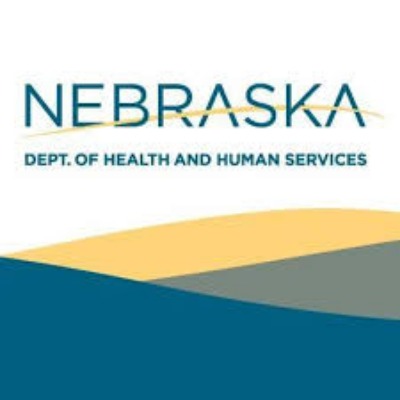
Lincoln –As Nebraska continues to adjust to a new normal as a result of the impacts of COVID-19 on the state, the Nebraska Department of Health and Human Services (DHHS) has set up a coronavirus (COVID-19) information line that will allow residents to get answers to general questions and receive information on resources available. That number is (402) 552-6645; hours of operation are 8 a.m.-8 p.m. CST, 7 days a week.
”DHHS is working hand in hand with local health departments and the federal government to ensure that we stop the spread of this virus,” said Dr. Gary Anthone, Director of Public Health and Chief Medical Officer for DHHS. “Keeping Nebraskans safe and illness-free is our top priority. Our info line will be a crucial part of that effort by allowing us to swiftly answer questions about how the state is responding to the needs of its residents and share the latest information and resources to help keep Nebraskans informed.”
If you are concerned that you may have COVID-19, it’s important to remember to call ahead to your healthcare provider to be screened over the phone. The provider can evaluate and determine if testing is necessary. Flu activity is also still high in Nebraska. Flu tests should be considered as a first test option before considering a COVID-19 test.
The Department urges you to self-monitor and contact your health care provider (via phone or email) first to discuss if your symptoms are significant enough to warrant a trip to the medical office. Following this guidance will allow those with the imminent need to get treatment, reduce your potential exposure and minimize the load on health care providers.
In addition to the state’s information line, some counties have also established hotlines. They include:
- DOUGLAS COUNTY/OMAHA: Douglas County Health Department’s COVID-19 Information Line is open weekdays from 8:30 a.m. to 4 p.m. at (402) 444-3400 to answer general questions about this new disease. The line is answered in English and Spanish. The United Way’s 2-1-1 information line is also taking calls when the DCHD line is closed.
- LANCASTER COUNTY/LINCOLN: The Lincoln-Lancaster County Health Department has established a hotline for self-reporting, guidance and next steps. (402) 441-3400
Local health departments are also a helpful resource. A map of Nebraska’s local health departments can be found here – http://dhhs.ne.gov/CHPM%20Maps/NE_Health_Dept_Map_Dec_2016.pdf.
Visit the DHHS COVID-19 webpage at http://dhhs.ne.gov/coronavirus and CDC’s website at https://www.cdc.gov/covid19.
DHHS will continue to update Nebraskans through the DHHS website and on Facebook and Twitter as we have new information. The CDC’s website is also a good resource for COVID-19 information – https://www.cdc.gov/covid19.
A History of the Census in the United States : Part 21
The Twenty-First Census: Census Day was April 1, 1990.
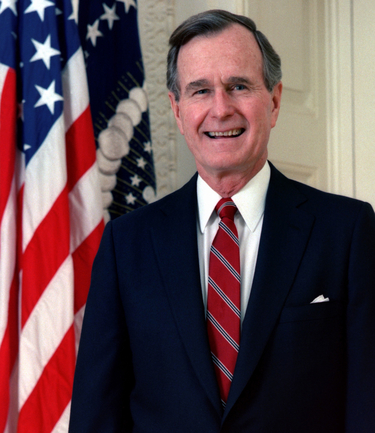
The Census Bureau relied on extensive user consultation prior to the census to guide its efforts to refine both the long and short form questionnaires and the resulting data products. The agency held close to 100 meetings with groups including interested citizens, state agencies and legislatures, and public and private organizations throughout the country. It also solicited recommendations from federal agencies.
Enumeration
The 1990 census used two questionnaires: A short form asked 13 questions to 100 percent of the population and a long form asked 45 questions to 20 percent. Questions on the long form covered topics as diverse as marital history, carpooling arrangements, number of stories in their dwelling place, presence of elevators, and type of cooking and water-heating fuel used. Questions about the presence of air conditioning, the number of bathrooms, and type of heating equipment were dropped from the housing section of the 1990 census.
An additional question on congregate housing (such as, “Does the monthly rent include any meals?”) was added and the question on disability was revised, replacing the 1980 question on ability to use public transportation with one on ability to go outside of the home alone and to take care of personal needs.
Efforts to Improve Coverage and Completeness
Americans were alerted to the importance of responding to the 1990 census by extensive public television, radio, and print advertising. Promotion activities included local “complete count” committees, information kits and lesson plans for schools (Census in Schools), for churches, local government outreach and partnerships, and pro bono public service announcements, costing approximately $67 million.
The Census Bureau built upon its “T-Night” and “M-Night” itinerate person enumeration programs from 1980 with “S-Night” (“S” standing for Streets/Shelters). S-Night was a one-night sweep, conducted in major cities, of homeless shelters nationwide and other areas where the homeless were known to congregate. Many in the media billed this event, which took place on March 20, 1990, as a “homeless census,” although there is no way to determine the proportion of the homeless population that was counted on “S-Night.”
Following the 1980 census, the Census Bureau initiated plans to study the possibility of statistically adjusting the 1990 census to correct for the undercount. As a part of a planned post enumeration survey (PES) the Census Bureau would complete a contemporaneous survey of households and compare the results to information from the census for the same block clusters. With these data, the Census Bureau hoped to be able to develop adjustment factors to compensate for the anticipated undercount.
In October 1987, the undersecretary of commerce for economic affairs announced that, because the Commerce Department did not intend to statistically adjust the census for either undercounts or overcounts, he was canceling the Census Bureau’s adjustment-related planning activities for the 1990 census.
In November 1988, New York City and a coalition of state and local interests joined forces to file a lawsuit to compel the Census Bureau to reconsider the use of statistical adjustment of the population totals in light of the expected undercount from the 1990 census. In July 1989, the Commerce Department and the New York plaintiffs reached a partial resolution of the lawsuit. The Census Bureau would reinstate the PES (but with a smaller sample size than originally planned) and use it to produce population data that had been adjusted for the projected undercount. These data would be judged against the unadjusted data by an expert panel – the Secretary of Commerce’s Special Advisory Panel (SAP), which would provide advice on whether to adjust the 1990 population figures.
Technological Advances
The Topologically Integrated Geographic Encoding and Referencing System (TIGER), developed by the U.S. Geological Survey and the Census Bureau, was introduced for the 1990 Census. It is a computerized representation of various map features such as streets, and rivers, and census geographic boundaries and their attributes such as latitude, longitude and address ranges. TIGER was used to geographically code addresses into appropriate census geographic areas, as well as to produce the many different maps required for data collection and tabulation.
In 1985 the Census Bureau was the first government agency to make information available on CD-ROM, a new and relatively untested medium. Six years later, detailed census data, which for several decades had been available only to organizations with large mainframe computers, was made accessible by anyone with a personal computer. As in 1980, 1990 census data were available in print, on computer tape, and on microfiche. In addition to these media and CD-ROM, selected data were also made available online through two vendors of online services- DIALOG and CompuServe.
Intercensal Activities
Demographic analysis showed that the 1990 census had an estimated net undercount of 1.8%, with an appreciably larger net undercount rate for African Americans than for other residents. The PES sampled 165,000 households in 7,500 blocks, and the Census Bureau compared this data with data from the census for the same block clusters. By comparing the data from these two sources, Census Bureau statisticians were able to estimate the numbers and characteristics of those missed or improperly counted by the enumeration. From there, the statisticians developed statistically adjusted population counts down to the block level.
In June 1991, the Undercount Steering Committee, a Census Bureau group charged with advising the director on adjustment recommended using the adjusted population counts. Following this recommendation, the director herself came out in favor of adjustment. However, the undersecretary of commerce for economic affairs, who oversees the Census Bureau disagreed. The secretary of commerce’s SAP split, four votes to four.
Responding to the mixed recommendations, the secretary of commerce announced in July 1991 that he did not find the evidence in favor of using adjusted counts convincing. He decided that the 1990 census would use the unadjusted totals.
Following announcement of the secretary’s decision, the New York plaintiffs resumed their lawsuit. The federal district court decided in favor of the Department of Commerce in April 1993. Plaintiffs appealed the ruling, and the U.S. Court of Appeals rejected the district court ruling and ordered that the case be returned to the district court for further proceedings. The issue was finally taken up by the Supreme Court, which in March 1996 upheld the secretary’s decision not to adjust the 1990 census counts, but did not rule on either the legality or constitutionality of the use of statistical adjustment in producing the apportionment counts.
Further Information
- A detailed procedural history of the 1990 census is available in Procedural History: 1990 Census of Population and Housing [63 MB]
- Reports and statistics from the 1990 census
Information provided from Census.gov
Posted in Books & Reading, Census, Education & Training, General, Information Resources, What's Up Doc / Govdocs
Tagged census
Leave a comment
Data.Census.gov Replacing American FactFinder
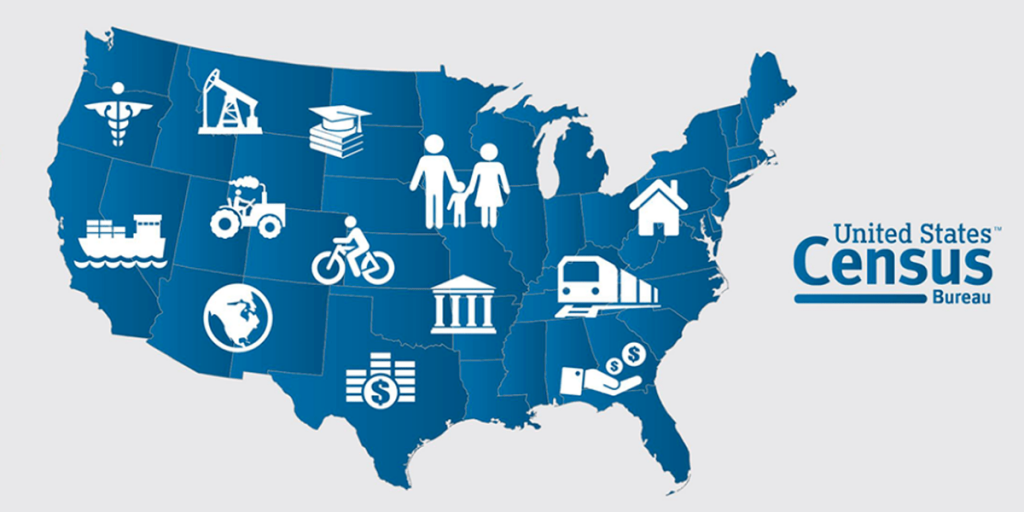
American FactFinder (AFF) will be decommissioned and offline on March 31, 2020.
What is data.census.gov?
Data.census.gov is the new platform to access data from the U.S. Census Bureau. The vision for data.census.gov is to improve the customer experience by making data available from one centralized place so that data users spend less time searching for data content and more time using it.
This vision stems from overwhelming feedback that the Census Bureau has received to simplify the way customers get data. The Census Bureau continues to work on the customer experience so that it is not necessary for data users to know Census Bureau jargon or perform a complicated search to find the data that they need.
Transition From American FactFinder
American FactFinder (AFF) will be decommissioned and offline on March 31, 2020.
Data previously released on AFF are now being released on the U.S. Census Bureau’s new dissemination platform, data.census.gov. Since we are a developing site, not all the data from AFF have been migrated over to data.census.gov. Below is an overview of our data migration status that will be updated regularly.
| AFF Data Sets Coming Soon to data.census.gov | Until then, find it here: |
| American Community Survey: | |
| 2010 to 2015 1-Year Selected Population Profiles | Availability Spreadsheet |
| 2011-2015 5-Year Selected Population Tables | |
| 2011-2015 5-Year American Indian & Alaska Native | |
| 2010 Decennial SF2 and PL | FTP |
| 2000 Decennial | FTP |
| New Data Sets Coming to data.census.gov | Until then, find it here: |
| Population and Housing Unit Estimates | API and Program Page |
| Annual Survey of Manufactures | API |
| Public Sector (Govs) | FTP |
| Commodity Flow Survey | Program Page |
| Older Data Sets Not Available on data.census.gov | Find it Here: |
| American Community Survey Data Prior to 2010 | FTP (Detailed Tables) |
| Nonemployer Data Prior to 2012 | API |
| County Business Patterns Prior to 2012 | API and FTP |
| Economic Census Prior to 2012 | FTP |
| Economic Census Island Area Prior to 2012 | FTP |
| Commodity Flow Survey Prior to 2012 | Program Page |
| 2010 EEO | FTP |
| Products No Longer Available |
| Quick Tables (QT) |
| Geographic Comparison Tables (GCT) |
| Ranking Tables (GRT) |
| Geographic Header (G001) |
Posted in Census, Education & Training, General, Information Resources, What's Up Doc / Govdocs
Tagged census
Leave a comment
Update: Libraries and the 2020 Census

| The Census form opens March 12 (That’s tomorrow!) Beginning March 12, households will begin receiving 2020 Census mailings and can start responding. These key resources can help your library staff prepare: Have 2 minutes? Read ALA’s “Responding to the Census (PDF)” Have 10 minutes? Watch this new “2020 Census Training Video for Public Library Staff” from libraries in Cuyahoga County, Ohio Have 2 hours? Read ALA’s “Libraries’ Guide to the 2020 Census (PDF)” Find ALA’s full collection of resources at ala.org/census. |
| Invite your elected officials to fill out their Census at the library Make sure your elected officials know how your library is supporting a complete count in the 2020 Census! One idea: invite your elected officials to fill out their own Census form at the library. It’s a great photo opportunity – and they can share it to spread the word about the Census and how the library can help. You can use ALA’s template (DOC) to invite your local, state, and federal officials. Be sure to coordinate with your library director and communications or government relations staff. |
| Grant opportunity from the National League of Cities The National League of Cities is accepting applications for grants for Census activities. Libraries are eligible to apply if they are a city agency or are partnering with a city government (get a letter from a mayor near you). Apply as soon as possible, as applications are being reviewing on a rolling basis. |
| New Census materials from Sesame Street and Dr. Seuss Looking for materials to use in your Census outreach with children and families? Check out new free materials from Sesame Workshop and Seussville. For more resources, visit Count All Kids and the Census Bureau. |
| Coming soon: Mobile Questionnaire Assistance Later this month, the Census Bureau will begin its Mobile Questionnaire Assistance operation in locations across the country. The Census Bureau may contact libraries about setting up Mobile Questionnaire Assistance at your location. To learn more, see the Census Bureau’s fact sheet. If you have questions or would like to invite Mobile Questionnaire Assistance to your library, contact your local Census Bureau Partnership Specialist. Note that Mobile Questionnaire Assistance will be available in limited areas, targeting communities with low self-response rates. |
| Special report in American Libraries magazine The cover story in this month’s American Libraries magazine is a special report on the 2020 Census. To learn more about what libraries across the country are doing, take a look! |
A History of the Census in the United States : Part 20
The Twentieth Census: Census Day was April 1, 1980.
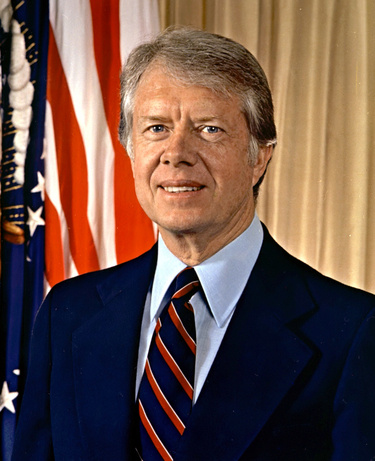
Enumeration
Due to the success of the mail-out/mail-back questionnaire in 1970 the program was expanded for 1980 with about 95 percent of the U.S. population now enumerated in this manner.
The 1980 short form contained 7 population questions and 11 housing questions; the long form contained an additional 26 population and 10 housing inquiries. A question on Spanish or Hispanic origin or descent was added to the 100-percent questions for the first time; in 1970 this question was asked of only 5 percent of the population.
The 1980 census also included two small surveys. The Components of Inventory Change Survey obtained information on the number and characteristics of housing units that changed or stayed the same between 1973 and 1980. The Residential Finance Survey collected data on mortgages, shelter costs, selected housing characteristics and owner characteristics.
Efforts to Improve Coverage and Completeness
An extensive public service advertising campaign directed by the Census Bureau’s Census Publicity Office, which was established in 1978, focused on increasing the public’s awareness of the census and encouraging people to complete and mail back their questionnaires. The Census Bureau secured the free services of the Advertising Council, which in turn hired the firm of Ogilvy & Mather to develop the campaign.
Additionally, the Census Bureau made a special effort to enumerate historically undercounted groups during two programs, “M-Night” (“M” for mission) and “T-Night” (“T” for transient). On M-Night, specially trained enumerators counted people staying in homeless shelters, soup kitchens, bus and rail stations, dormitories, and others. On T-Night, the enumeration focused on hotels and motels with permanent residents.
Technological Advances
The Census Bureau developed the State Data Center Program to simplify public access to data available on computer tapes. Agreements between state governors and the director of the Census Bureau committed the agency to provide free copies of any Census Bureau electronic and printed information and products to the states; the states, in turn, agreed to develop a network of affiliate organizations (state executive departments, chambers of commerce, councils of governments, university research departments or libraries) by which census information would be delivered to local users. By the mid-1980’s all states were participating in the program, which encompassed about 1,200 state and local organizations.
Intercensal Activities
Demographic analysis of the 1980 census showed that once again the census, despite reaching the overwhelming majority of people in the United States, undercounted the population, this time by about 1.2 percent. More troubling, the estimated net undercount rate for African Americans was 3.7 percentage points higher than that for all other races combined.
Before the enumeration process had finished, the city of Detroit sued, demanding that statistical adjustment be used to compensate for those estimated by the Census Bureau to have been missed or improperly counted. Shortly thereafter, several other states and localities, including the city and state of New York, also filed suit. The Census Bureau announced in the fall of 1980 that it did not plan to adjust its population totals using statistical methods because it could not be sure of the number and distribution of illegal aliens and other undercounted groups.
The New York suit would eventually become the most prominent case; a federal district court ruled in the plaintiffs’ favor in late 1980, ordering the Census Bureau to adjust its numbers to correct for the undercount. The Supreme Court stayed this and other rulings in December 1980, allowing the Census Bureau to report its unadjusted figures to the president. A federal appeals court finally ruled, in 1987, that the census figures should not be adjusted to account for the undercount because the Census Bureau’s decision not to adjust was not arbitrary and capricious.
Further Information
- A detailed procedural history of the 1980 census is available in Procedural History: 1980 Census of Population and Housing [ZIP 80MB]
- Reports and statistics from the 1980 census.
Information provided from Census.gov
Posted in Books & Reading, Census, Education & Training, General, Information Resources, What's Up Doc / Govdocs
Tagged census
Leave a comment
A History of the Census in the United States : Part 19
The Nineteenth Census: Census Day was April 1, 1970.
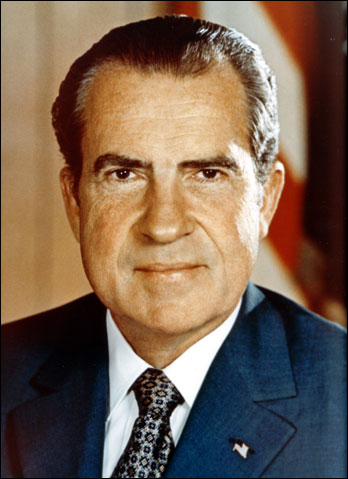
In 1966, the Census Bureau solicited suggestions from its advisory committees and from the general public about the makeup of the census and the availability of the resulting data products. It instituted a series of 23 local public meetings around the country to broaden the scope of its efforts, which resulted in numerous proposals for additional inquiries about the scope and structure of the census, and interest in increasing data products published, particularly for smaller areas such as blocks.
Enumeration
Studies after the 1950 and 1960 censuses revealed that those censuses had undercounted certain segments of the population. Researchers also noted a growing distrust of government and resistance to responding to the census, despite an increasing need for accurate information in both the private and public sectors. In large measure, the increased need for data resulted from the federal government’s reliance on population and other information collected by the census when distributing funds to state and local governments. In an effort to reduce the complexity of its products, the Census Bureau reduced the number of inquiries on the long-form questionnaire from 66 to 23.
The Census Bureau created an address register for densely settled areas that U.S. Post Office employees who were familiar with their routes were instructed to correct and update as needed. The register was also used to ensure that all housing units were accounted for when enumerators had completed their assignments.
The U.S. Post Office delivered census questionnaires with instruction sheets to every household several days prior to Census Day. In areas with a substantial number of Spanish-speaking households, a Spanish-language version of the instruction sheet was also enclosed. For the first time, a separate question on Hispanic origin or descent was asked, but only of a 5 percent sample of the population.
Also for the first time, residents of urban and surrounding areas were instructed to mail their forms back to the Census Bureau where enumerators reviewed them and used follow-up interviews to check on missing or incorrect responses. Rural householders received questionnaires in the mail, but were asked to hold the form for pickup by an enumerator. A letter explaining the need for the data collected and emphasizing the confidentiality of responses accompanied all census questionnaires.
Sampling
Only 5 questions were asked of all individuals: relationship to household head, sex, race, age, and marital status. Other questions were asked of a 15 percent sample and still others of a 5 percent sample. Questions common to both samples resulted in a 20 percent sample.
Technological Advancement
Computerized address lists, called Address Coding Guides, helped assign census geographic codes to questionnaires.
A major innovation for the 1970 Census was the production of a series of computer tape files, called “Counts.” Counts one, two, and three contained complete count data for block groups/enumeration districts, census tracts and minor civil/census county divisions, and blocks, respectively. The fourth through sixth Counts provided sample data for geographic areas of varying population size. The Census Bureau also produced six Public Use Microdata Sample files, each containing complete information for a small sample of the population; roughly two million individuals. A variety of public and private institutions participated in the Census Bureau’s Summary Tape Processing Center Program, a loose-knit group of organizations that processed data from the 1970 census computer tapes.
Further Information
- A detailed procedural history of the 1970 census are available in Procedural History: 1970 Census of Population and Housing [ZIP 165MB]
- A wide variety of historical statistics from this and other decades is available in Historical Statistics of the United States: Colonial Times to 1970. It is available as a PDF [74.4MB] or 2-part ZIP file: Part I [52.2MB] | Part II [66.1MB].
- Reports and statistics from the 1970 census.
Information provided from Census.gov
Posted in Books & Reading, Census, Education & Training, General, Information Resources, What's Up Doc / Govdocs
Tagged census
Leave a comment
A History of the Census in the United States : Part 18
The Eighteenth Census: Census Day was April 1, 1960.

Enumeration
1960 marked the birth of the first mail-out census. Earlier censuses had used self-enumeration on a limited scale, but 1960 was the debut for this technique as a primary method for the collection of population and residential data. The postal service delivered questionnaires to every occupied housing unit. Householders were asked to complete the questionnaire and hold it for an enumerator to pick up.
Enumeration efforts were divided into two stages. The first stage concentrated on the quick collection of a few data items for every person and dwelling unit- information available from responses to questions on the questionnaire that had been delivered to every household. The second stage focused on the collection of more detailed economic and social information from a sample of households and dwelling units. Second stage questionnaires were hand-delivered by enumerators when they came to pick up the first form. Households receiving the second questionnaire were asked to complete the form and mail it to their local census office in postage-paid envelopes provided by enumerators.
In areas of low population density, the two-staged enumeration was combined to allow enumerators to collect and record sample data at the same time they came to fill out the general questionnaire.
Sampling
Additional sample questions were asked of 25 percent of the population. In urban areas (accounting for about 80 percent of the nation’s population), enumerators carried questionnaires containing the sample population and housing questions for every fourth housing unit. If the units were occupied, the householders were asked to complete the sample questionnaires and mail them to district offices. If the units were vacant, the enumerators completed the questionnaires.
The greater use of sampling meant that the totals for some less populated areas were subject to moderate amounts of sampling variation, which did not significantly impair the usefulness of the statistics gathered. Using a 25 percent sample of households eliminated nearly 75 percent of the processing expenses that would otherwise be required.
Additional questions, which had been discussed but not included in several past censuses, focusing on place of work and means of transportation to work were added in 1960.
Technological Advancement
Computers processed nearly all data from the 1960 census. For the first time, the Census Bureau used a film optical sensing device for input to computers (FOSDIC). This machine “read” and converted to code on magnetic tape data appearing on returned questionnaires thus eliminating the time and expense for the previously necessary step where clerks entered the data on punch cards. The questionnaires for 1960 were designed so that respondents could indicate their answers by marking small corresponding circles on the page. The completed questionnaires were photographed onto microfilm with automatic cameras; FOSDIC then read the blackened dots (which appeared as clear holes on the negative film) and transferred the data they represented to magnetic tape for the computer at a speed of 3,000 items per minute. Later versions of the FOSDIC device were able to process up to 70,000 items per minute.
Further Information
- A detailed procedural history of the 1960 census is available in 1960 Censuses of Population and Housing: Procedural History [66.7 MB]
- A wide variety of historical statistics from this and other decades is available in Historical Statistics of the United States: Colonial Times to 1970. It is available as a PDF [74.4MB] or 2-part ZIP file: Part I [52.2MB] | Part II [66.1MB].
- Reports and statistics from the 1960 census.
Information provided from Census.gov
Posted in Books & Reading, Census, Education & Training, General, Information Resources, What's Up Doc / Govdocs
Tagged census
Leave a comment
Book Briefs: New University of Nebraska Press Books at the Nebraska Publications Clearinghouse

The Nebraska Publications Clearinghouse receives documents every month from all Nebraska state agencies, including the University of Nebraska Press (UNP). Each month we will be showcasing the UNP books that the Clearinghouse receives. UNP books, as well as all Nebraska state documents, are available for checkout by libraries and librarians, for their patrons, in Nebraska.
Here are the UNP books the Clearinghouse received in February 2020:

Assembling Moral Mobilities : Cycling, Cities, & the Common Good Nicholas A. Scott
In the years since the new mobilities paradigm burst onto the social scientific scene, scholars from various disciplines have analyzed the social, cultural, and political underpinnings of transport, contesting its long-dominant understandings as defined by engineering and economics. Still, the vast majority of mobility studies, and even key works that mention the “good life” and its dependence on the car, fail to consider mobilities in connection with moral theories of the common good.
In Assembling Moral Mobilities Nicholas A. Scott presents novel ways of understanding how cycling and driving animate urban space, place, and society and investigates how cycling can learn from the ways in which driving has become invested with moral value. By jointly analyzing how driving and cycling reassembled the “good city” between 1901 and 2017, with a focus on various cities in Canada, in Detroit, and in Oulu, Finland, Scott confronts the popular notion that cycling and driving are merely antagonistic systems and challenges social-scientific research that elides morality and the common good. Instead of pitting bikes against cars, Assembling Moral Mobilities looks at five moral values based on canonical political philosophies of the common good, and argues that both cycling and driving figure into larger, more important “moral assemblages of mobility,” finally concluding that the deeper meta-lesson that proponents of cycling ought to take from driving is to focus on ecological responsibility, equality, and home at the expense of neoliberal capitalism. Scott offers a fresh perspective of mobilities and the city through a multifaceted investigation of cycling informed by historical lessons of automobility.

Death at the Edges of Empire : Fallen Soldiers, Cultural Memory, and the Making of an American Nation, 1863-1921 Shannon Bontrager (Series: Studies in War, Society, and the Military)
Hundreds of thousands of individuals perished in the epic conflict of the American Civil War. As battles raged and the specter of death and dying hung over the divided nation, the living worked not only to bury their dead but also to commemorate them. President Abraham Lincoln’s Gettysburg Address perhaps best voiced the public yearning to memorialize the war dead. His address marked the beginning of a new tradition of commemorating American soldiers and also signaled a transformation in the relationship between the government and the citizenry through an embedded promise and obligation for the living to remember the dead.
In Death at the Edges of Empire Shannon Bontrager examines the culture of death, burial, and commemoration of American war dead. By focusing on the Civil War, the Spanish-Cuban-American War, the Philippine-American War, and World War I, Bontrager produces a history of collective memories of war expressed through American cultural traditions emerging within broader transatlantic and transpacific networks. Examining the pragmatic collaborations between middle-class Americans and government officials negotiating the contradictory terrain of empire and nation, Death at the Edges of Empire shows how Americans imposed modern order on the inevitability of death as well as how they used the war dead to reimagine political identities and opportunities into imperial ambitions.
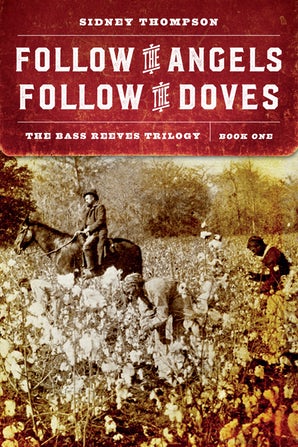
Follow the Angels, Follow the Doves : The Bass Reeves Trilogy, Book One Sidney Thompson (Series: The Bass Reeves Trilogy)
Follow the Angels, Follow the Doves is an origin story in the true American tradition. Before Bass Reeves could stake his claim as the most successful nineteenth-century American lawman, arresting more outlaws than any other deputy during his thirty-two-year career as a deputy U.S. marshal in some of the most dangerous regions of the Wild West, he was a slave.
After a childhood picking cotton, he became an expert marksman under his master’s tutelage, winning shooting contests throughout the region. His skill had serious implications, however, as the Civil War broke out. Reeves was given to his master’s mercurial, sadistic, Moby-Dick-quoting son in the hopes that Reeves would keep him safe in battle. The ensuing humiliation, love, heroics, war, mind games, and fear solidified Reeves’s determination to gain his freedom and drew him one step further on his fated path to an illustrious career.
Follow the Angels, Follow the Doves is an important historical work that places Reeves in the pantheon of American heroes and a thrilling historical novel that narrates a great man’s exploits amid the near-mythic world of the nineteenth-century frontier.

The Grass Shall Grow : Helen Post Photographs the Native American West Mick Gidley
The Grass Shall Grow is a succinct introduction to the work and world of Helen M. Post (1907–79), who took thousands of photographs of Native Americans. Although Post has been largely forgotten and even in her heyday never achieved the fame of her sister, Farm Security Administration photographer Marion Post Wolcott, Helen Post was a talented photographer who worked on Indian reservations throughout the West and captured images that are both striking and informative.
Post produced the pictures for the novelist Oliver La Farge’s nonfiction book As Long As the Grass Shall Grow (1940), among other publications, and her output constitutes a powerful representation of Native American life at that time. Mick Gidley recounts Post’s career, from her coming of age in the turbulent 1930s to her training in Vienna and her work for the U.S. Indian Service, tracking the arc of her professional reputation. He treats her interactions with public figures, including La Farge and editor Edwin Rosskam, and describes her relationships with Native Americans, whether noted craftspeople such as the Sioux quilter Nellie Star Boy Menard, tribal leaders such as Crow superintendent Robert Yellowtail, or ordinary individuals like the people she photographed at work in the fields or laboring for federal projects, at school or in the hospital, cooking or dancing.
The images reproduced here are analyzed both for their own sake and in order to understand their connection to broader national concerns, including the 1934 Indian Reorganization Act. The thoroughly researched and accessibly written text represents a serious reappraisal of a neglected artist.
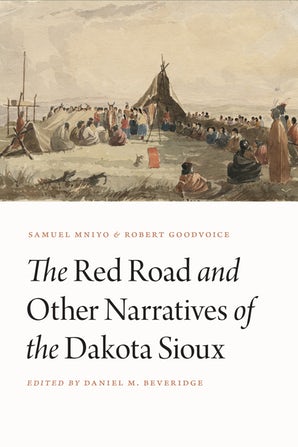
The Red Road and Other Narratives of the Dakota Sioux Samuel Mniyo & Robert Goodvoice; Edited by Daniel M. Beveridge (Series: Studies in the Anthropology of North American Indians)
This book presents two of the most important traditions of the Dakota people, the Red Road and the Holy Dance, as told by Samuel Mniyo and Robert Goodvoice, two Dakota men from the Wahpeton Dakota Nation near Prince Albert, Saskatchewan, Canada. Their accounts of these central spiritual traditions and other aspects of Dakota life and history go back seven generations and help to illuminate the worldview of the Dakota people for the younger generation of Dakotas, also called the Santee Sioux.
“The Good Red Road,” an important symbolic concept in the Holy Dance, means the good way of living or the path of goodness. The Holy Dance (also called the Medicine Dance) is a Dakota ceremony of earlier generations. Although it is no longer practiced, it too was a central part of the tradition and likely the most important ceremonial organization of the Dakotas. While some people believe that the Holy Dance is sacred and that the information regarding its subjects should be allowed to die with the last believers, Mniyo believed that these spiritual ceremonies played a key role in maintaining connections with the spirit world and were important aspects of shaping the identity of the Dakota people.
In The Red Road and Other Narratives of the Dakota Sioux, Daniel Beveridge brings together Mniyo and Goodvoice’s narratives and biographies, as well as songs of the Holy Dance and the pictographic notebooks of James Black (Jim Sapa), to make this volume indispensable for scholars and members of the Dakota community.
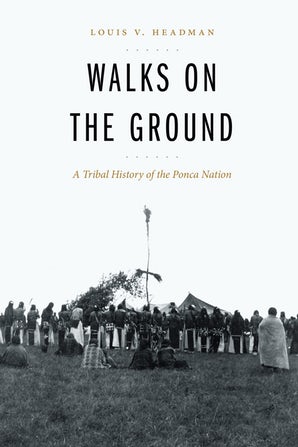
Walks on the Ground : A Tribal History of the Ponca Nation Louis V. Headman
Walks on the Ground is a record of Louis V. Headman’s personal study of the Southern Ponca people, spanning seven decades beginning with the historic notation of the Ponca people’s origins in the East. The last of the true Ponca speakers and storytellers entered Indian Territory in 1877 and most lived into the 1940s.
In Ponca heritage the history of individuals is told and passed along in songs of tribal members. Headman acquired information primarily when singing with known ceremonial singers such as Harry Buffalohead, Ed Littlecook, Oliver Littlecook, Eli Warrior, Dr. Sherman Warrior (son of Sylvester Warrior), Roland No Ear, and “Pee-wee” Clark. Headman’s father, Kenneth Headman, shared most of this history and culture with Louis. During winter nights, after putting a large log into the fireplace, Kenneth would begin his storytelling. The other elders in the tribe confirmed Kenneth’s stories and insights and contributed to the history Louis has written about the Ponca.
Walks on the Ground traces changes in the tribe as reflected in educational processes, the influences and effects of the federal government, and the dominant social structure and culture. Headman includes children’s stories and recognizes the contribution made by Ponca soldiers who served during both world wars, the Korean Conflict, the Vietnam War, Desert Storm, and the ongoing conflict in the Middle East.
**All synopses courtesy of University of Nebraska Press (https://www.nebraskapress.unl.edu/)
What’s Up Doc? New State Agency Publications at the Nebraska Library Commission
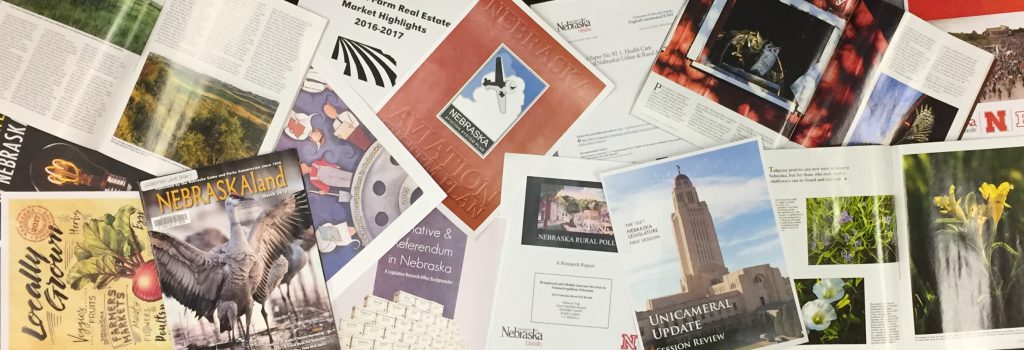
New state agency publications have been received at the Nebraska Library Commission for February 2020. Included are annual reports from a variety of Nebraska state agencies, comprehensive plans from various County Juvenile Services, economic development reports from the Nebraska Public Power District, new Extension Guides from the University of Nebraska–Lincoln Extension, budget reports from the Nebraska Unicameral Legislature, and new books from the University of Nebraska Press, to name a few.
Most items, except the books from the University of Nebraska Press, are available for immediate viewing and printing by clicking on the highlighted link above, or directly in the .pdf below. You can read synopses of the books received from the University of Nebraska Press in the Book Briefs blogposts.
The Nebraska Legislature created the Nebraska Publications Clearinghouse in 1972, a service of the Nebraska Library Commission. Its purpose is to collect, preserve, and provide access to all public information published by Nebraska state agencies. By law (State Statutes 51-411 to 51-413) all Nebraska state agencies are required to submit their published documents to the Clearinghouse. For more information, visit the Nebraska Publications Clearinghouse page, contact Mary Sauers, Government Information Services Librarian; or contact Bonnie Henzel, State Documents Staff Assistant.
DHHS Asking Nebraskans With Travel in Past 14 Days to Countries With Community Transmission of COVID-19 to Contact Local Health Department

| FOR IMMEDIATE RELEASE February 26, 2020 CONTACT Leah Bucco-White, Communications and Legislative Services, 402-471-9356 leah.bucco-white@nebraska.gov DHHS Asking Nebraskans With Travel in Past 14 Days to Countries With Community Transmission of COVID-19 to Contact Local Health Department Lincoln – The Nebraska Department of Health and Human Services (DHHS) and its public health partners continue to closely track the unfolding outbreak of coronavirus disease 2019 (COVID-19) and anticipate its impact on Nebraska and its health care systems. The virus originated in China and has spread to multiple other countries including the United States. So far, there have been no cases identified in Nebraska residents. “Ensuring the health of Nebraskans is our main priority and public health officials continue to actively monitor self-isolated Nebraska residents who recently returned from China,” said Dr. Tom Safranek, State Epidemiologist for DHHS. “Based on the spread of COVID-19 and an increase in cases in other countries, DHHS is now including Hong Kong, Japan, South Korea, Iran, Italy, Singapore, Taiwan, Thailand and Vietnam, along with China. We’re asking people with travel to these countries in the last 14 days to either self-report to the Nebraska public health online system at http://dhhs.ne.gov/Pages/Coronavirus.aspx or contact their local health department for guidance and next steps. Informing the local health department of recent travel history is the most direct way to ensure timely medical care if needed and to minimize the potential risk to others.” A map of Nebraska’s local health departments can be found here http://dhhs.ne.gov/CHPM%20Maps/NE_Health_Dept_Map_Dec_2016.pdf . A list of local health departments along with contact information is provided below. It is important to remember that people who may become ill upon returning from overseas travel are more likely to have other respiratory illnesses typically seen this time of year like flu, which might also require treatment. However, it is very possible that we could see travel-related COVID-19 cases in Nebraska residents. State and local public health officials continue to take action to prevent the spread of disease and protect the health of Nebraskans including: Sharing the latest guidance and information with local health departments, hospitals, health care providers, first responders and local and state labs through our extensive Health Alert Network to ensure a well-coordinated response in Nebraska. DHHS Health Alert Network – http://dhhs.ne.gov/Pages/Health-Alert-Network.aspx Assessing our health care system’s readiness to identify, monitor and treat patients with coronavirus disease 2019. Engaging in active and ongoing communication with the Centers for Disease Control and Prevention and other state and federal partners as part of the overall national response to this emerging public health threat. Reviewing and enhancing response plans to be ready for the detection of COVID-19 in our state. Facilitating confirmatory testing, isolation and monitoring of Nebraskans experiencing symptoms to identify cases as soon as possible. Updating dhhs.ne.gov/coronavirus with the latest information and resources. With our local health department partners, we have a system in place to track and monitor people who have contact with a confirmed case in an effort to immediately detect secondary cases and minimize the potential for ongoing, undetected, person-to-person transmission. Nebraskans are also encouraged to review their family preparedness plans in the event that coronavirus disease 2019 continues to spread in the United States. More resources will be available soon at http://www.dhhs.ne.gov/coronavirus. People can help protect themselves from COVID-19 and other respiratory infections by: Washing hands often with soap and water for at least 20 seconds. If soap and water aren’t available, use an alcohol-based sanitizer. Avoid touching your eyes, nose, and mouth with unwashed hands. Avoid close contact with sick people and stay home if you are sick. Cover your nose and mouth with a tissue when you cough or sneeze then throw the tissue in the trash. Clean and disinfect frequently touched objects and surfaces. To learn more about COVID-19, go to http://www.dhhs.ne.gov/coronavirus or https://www.cdc.gov/covid19. Contact information for Nebraska’s local health departments COUNTY HEALTH DEPARTMENTS Clay County Health Department 202 West Fairfield Clay Center Phone: (402) 762-3571 Website: www.claycounty.ne.gov (Clay County/Clay Center) Dakota County Health Department 1601 Broadway Street/Box 155 Dakota City Phone: (402) 987-2164 Website: www.dakotacountyne.org (Dakota County/Dakota City) Douglas County Health Department Communicable Disease Epidemiology Section 1111 South 41st Street Omaha Phone: (402) 444-7214 Website: www.douglascountyhealth.com (Douglas County/Omaha) Polk County Health Department 330 North State Street/Box 316 Osceola Phone: (402) 747-2211 Website: https://polkcounty.nebraska.gov/county–offices/health–department (Polk County/Osceola) Red Willow County Health Department 1400 West 5th McCook Phone: (308) 345-1790 Website: http://redwillowhealth.com (Red Willow County/McCook) Scotts Bluff County Health Department 1825 10th Street Gering Phone: (308) 436-6636 Website: www.scottsbluffcounty.org/health–department/health–department.html (Scotts Bluff County/Gering) CITY-COUNTY HEALTH DEPARTMENT Lincoln-Lancaster County Health Department 3131 “O” Street Lincoln Phone: (402) 441-8000 Website: www.lincoln.ne.gov/city/health (Lancaster County/Lincoln) DISTRICT HEALTH DEPARTMENTS Central District Health Department 1137 South Locust Street Grand Island Phone: (308) 385-5175 x178; Toll Free: (877) 216-9092 Website: www.cdhd.ne.gov (Hall County/Grand Island, Hamilton County/Aurora, Merrick County/Central City) East Central District Health Department 4321 41st Avenue Columbus Phone: (402) 562-8950 Email: bwewel@ecdhd.ne.gov Website: http://ecdhd.ne.gov (Boone County/Albion, Colfax County/Schuyler, Nance County/Fullerton, Platte County/Columbus) Elkhorn Logan Valley Public Health Department Box 779 Wisner Phone: (402) 529-2233; Toll-Free: (877) 379-4400 Website: www.elvphd.org (Burt County/Tekamah, Cuming County/West Point, Madison County/Madison, Stanton County/Stanton) Four Corners Health Department 2101 North Lincoln Avenue York Phone: (402) 362-2621; Toll-Free: (877) 337-3573 Website: www.fourcorners.ne.gov (Butler County/David City, Polk County/Osceola, Seward County/Seward, York County/York) Loup Basin Public Health Department 934 “I” Street/Box 995 Burwell Phone: (308) 346-5795; Toll-Free: (866) 522-5795 Website: www.loupbasinhealth.com (Blaine County/Brewster, Custer County/Broken Bow, Garfield County/Burwell, Greeley County/Greeley, Howard County/St Paul, Loup County/Taylor, Sherman County/Loup City, Valley County/Ord, Wheeler County/Bartlett) North Central District Health Department 422 East Douglas Street O’Neill Phone: (402) 336-2406; Toll Free: (877) 336-2406 Website: www.ncdhd.ne.gov (Antelope County/Neligh, Boyd County/Butte, Brown County/Ainsworth, Cherry County/Valentine, Holt County/O’Neill, Keya Paha County/Springview, Knox County/Center, Pierce County/Pierce, Rock County/Bassett) Northeast Nebraska Public Health Department 215 North Pearl Street Wayne Phone: (402) 375-2200; 24/7 Phone: (402) 369-3822 Website: www.nnphd.org (Cedar County/Hartington, Dixon County/Ponca, Thurston County/Pender, Wayne County/Wayne) Panhandle Public Health District 808 Box Butte Avenue Hemingford Phone: (308) 487-3600 Website: www.pphd.org (Banner County/Harrisburg, Box Butte County/Alliance, Cheyenne County/Sidney, Dawes County/Chadron, Deuel County/Chappell, Garden County/Oshkosh, Grant County/Hyannis, Kimball County/Kimball, Morrill County/Bridgeport, Scotts Bluff County/Gering, Sheridan County/Rushville, Sioux County/Harrison) Public Health Solutions District Health Department 995 East Highway 33/Suite 1 Crete Phone: (402) 826-3880 Website: http://phsneb.org (Fillmore County/Geneva, Gage County/Beatrice, Jefferson County/Fairbury, Saline County/Wilber, Thayer County/Hebron) Sarpy/Cass Health Department 701 Olson Drive/Suite 101 Papillion Phone: (402) 339-4334 x6978; Toll Free: (800) 645-0134 Website: www.sarpycasshealthdepartment.org (Cass County/Plattsmouth, Sarpy County/Papillion) South Heartland District Health Department 606 North Minnesota/Suite 2 Hastings Phone: (402) 462-6211; Toll Free: (877) 238-7595 Website: southheartlandhealth.org (Adams County/Hastings, Clay County/Clay Center, Nuckolls County/Nelson, Webster County/Red Cloud) Southeast District Health Department 2511 Schneider Avenue Auburn Phone: (402) 274-3993; Toll Free: (877) 777-0424 Website: www.sedhd.org (Johnson County/Tecumseh, Nemaha County/Auburn, Otoe County/Nebraska City, Pawnee County/Pawnee City, Richardson County/Falls City) Southwest Nebraska Public Health Department 404 West 10th Street McCook Phone: (308) 345-4223 Website: www.swhealth.ne.gov (Chase County/Imperial, Dundy County/Benkelman, Frontier County/Stockville, Furnas County/Beaver City, Hayes County/Hayes Center, Hitchcock County/Trenton, Keith County/ Ogallala, Perkins County/Grant, Red Willow/McCook) Three Rivers Public Health Department 2400 North Lincoln Street Fremont Phone: (402) 727-5396; Toll Free: (866) 727-5396 Website: https://threeriverspublichealth.org (Dodge County/Fremont, Saunders County/Wahoo, Washington County/Blair) Two Rivers Public Health Department 701 4th Avenue/Suite 1 Holdrege Phone: (308) 995-4778; Toll Free: (888) 669-7154 Website: http://trphd.org (Buffalo County/Kearney, Dawson County/Lexington, Franklin County/Franklin, Gosper County/Elwood, Harlan County/Alma, Kearney County/Minden, Phelps County/Holdrege) West Central District Health Department 111 N Dewey/Suite A North Platte Phone: (308) 696-1201 Website: http://wcdhd.org (Arthur County/Arthur, Hooker County/Mullen, Lincoln County/North Platte, Logan County/Stapleton, McPherson County/Tryon, Thomas County/Thedford) NOTE: After each county name is the county seat. |
What’s Up Doc? New State Agency Publications at the Nebraska Library Commission

New state agency publications have been received at the Nebraska Library Commission for January 2020. Included are Annual Reports from a variety of Nebraska state agencies, Rules and Regulations from the Nebraska Jail Standards Board, economic development reports from the Nebraska Public Power District, new Fishing and Boating Guides from the Nebraska Game and Parks Commission, reports from the Nebraska Department of Transportation, and new books from the University of Nebraska Press, to name a few.
Most items, except the books from the University of Nebraska Press, are available for immediate viewing and printing by clicking on the highlighted link above, or directly in the .pdf below. You can read synopses of the books received from the University of Nebraska Press in the Book Briefs blogposts.
The Nebraska Legislature created the Nebraska Publications Clearinghouse in 1972, a service of the Nebraska Library Commission. Its purpose is to collect, preserve, and provide access to all public information published by Nebraska state agencies. By law (State Statutes 51-411 to 51-413) all Nebraska state agencies are required to submit their published documents to the Clearinghouse. For more information, visit the Nebraska Publications Clearinghouse page, contact Mary Sauers, Government Information Services Librarian; or contact Bonnie Henzel, State Documents Staff Assistant.
2020 Census Preparation Manual
The 2020 Census will be conducted primarily online, creating additional obstacles to counting already under-counted populations. With this in mind, communities and organizations are preparing to support enumeration efforts by providing safe internet access points, answering questions from the community, and tracking incidents that arise.
The Digital Equity Laboratory has released a learning guide, Preparing for the First Digital Census, meant for anyone who intends to work with communities towards a complete count during Census 2020. Based on expert risk assessments and a series of pilot workshops across New York State, they have compiled a set of curriculum modules intended to equip organizations with the information and tools they need to play their part.
The goal is to provide both digital and public-facing tactics and techniques to reduce confusion, find the right path to participation for all, help prevent possible harms, and enable communities to better prepare against the uncertainties of a digital census. The aim has been to address holistic safety concerns, not solely cybersecurity.
Complete manual: “Preparing for the First Digital Census”
Free Class: Libraries as Partners in Healthy Communities
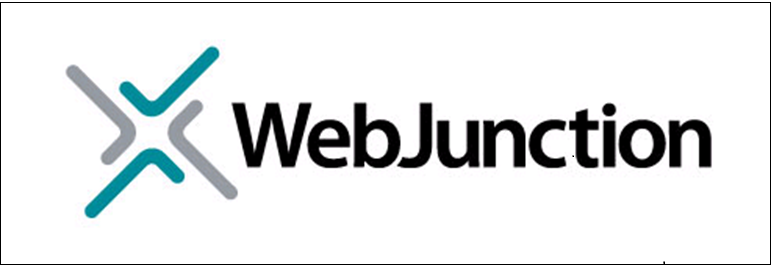
WebJunction is collaborating with the National Network of Libraries of Medicine (NNLM) to design a series of courses for public library staff related to health topics. The next course, available in March through WebJunction, is Libraries as Partners in Healthy Communities.
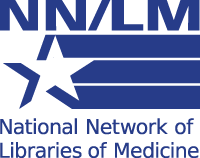
Public libraries around the country are magnifying the role they play as key contributors to community health. By understanding the health needs and challenges specific to our communities, libraries are able to respond with relevant services and programming, often created in collaboration with local agencies and health providers.
Join us this March for Libraries as Partners in Healthy Communities, a free, two-week, instructor-led course, to explore how your library can actively partner to promote the health of your community through responsive programs and services, and learn how to incorporate this focus into your library’s strategic plan.
The course will look at the many ways public libraries are supporting community health, and provide strategies and methods to identify activities that serve the health needs of your community. We will also look for inspiration and support from partnerships, including a library that partnered with the local Parks and Recreation department to host an all-ages Zumba program, and another that worked with the local health department to host a chronic disease self-management workshop for community members without adequate access to traditional healthcare. And Josh Berk, of Bethlehem Area Public Library, will present about Bike Bethlehem, a free bike share program serving community needs through a successful multi-agency partnership.
WebJunction’s Dale Musselman and NNLM’s Darlene Kaskie will present this free course in two live, online sessions, on March 3 and 10, from 2:00-3:00 pm Eastern Time, with two additional hours of readings and assignments for learners to complete on their own. You’ll also be encouraged to share your ideas and learning with others enrolled in the course through active discussion forums. Learn more about the course Libraries as Partners in Healthy Communities, enroll today, and join us in March to take the next steps for your library’s community health partnerships.
UPDATES: Libraries and the 2020 Census

| New webinar recording about responding to the Census If you missed ALA’s sold-out webinar, “Responding Online to the 2020 Census: What Libraries Need to Know,” the recording is now available. The webinar orients library staff to the 2020 Census questionnaire, the online response system, other options for responding, common questions, and tips for libraries. New tip sheet on Census programs and partnerships On January 30, ALA released “Libraries and the 2020 Census: Programming, Outreach, and Partnerships (PDF),” a 2-page tip sheet that describes how libraries can reach hard-to-count populations and build community collaborations around the 2020 Census. Updated “Libraries’ Guide to the 2020 Census” On January 22, ALA released an updated “Libraries’ Guide to the 2020 Census.” The revised 22-page guide (PDF) includes the latest information about Census operations and tips for libraries. Share it with a colleague who needs to know! Upcoming events February 13, 2 pm ET: YALSA webinar: “Engaging Teens in the 2020 Census” (free for YALSA members, paid for others) February 18, noon ET: ODLOS webinar: “Census 2020 Outreach to Communities of Color” February 28: PLA Conference: “2020 Census Countdown: What You Need to Know Now” (3:30 pm CT, Music City Center, room 103) News of note The Scoop: “Completing the Count” (January 26, 2020) – report of ALA Midwinter program UPI: “Census Bureau aims to improve response rates” (January 23, 2020) – includes a discussion of libraries’ activities School Library Journal: “Libraries Are Preparing for the 2020 Census. With Plenty at Stake, There’s Still Work To Be Done” (January 21, 2020) The Public Libraries Podcast: “The 2020 Census and Public Libraries” (January 21, 2020) |
A History of the Census in the United States : Part 17
The Seventeenth Census: Census Day was April 1, 1950.
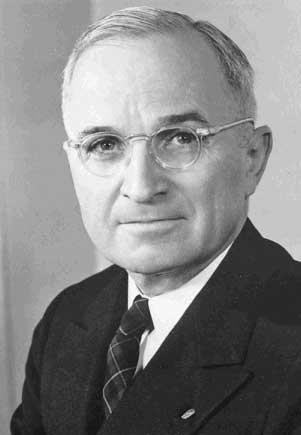
Enumeration
The 1950 census encompassed the continental United States, the territories of Alaska and Hawaii, American Samoa, the Canal Zone, Guam, Puerto Rico, the Virgin Islands of the United States, and some of the smaller island territories.
Americans abroad were enumerated for the first time in 1950. Provisions were made to count members of the armed forces, crews of vessels, and employees of the United States government living in foreign countries, along with any members of their families also abroad. This enumeration was carried out through cooperative arrangements with the departments of Defense and State, the United States Maritime Administration and other federal agencies that took responsibility for distributing and collecting specially designed questionnaires.
Other persons living abroad were to be reported by their families or neighbors in the United States, but the quality of these data was considered to be poor and they were not included in the published statistics.
A new survey on residential financing was conducted as part of the 1950 census. In a separate operation, information was collected on a sample basis from owners of owner-occupied and rental properties and mortgage lenders.
Efforts to Improve Coverage and Completeness
Several procedures were used to improve the accuracy and completeness of the 1950 census, including: improved enumerator training, providing enumerators with detailed street maps of their assigned areas, publishing “Missed Person” forms in local newspapers, and setting a specific night to conduct a special enumeration of persons in hotels, tourist courts, and other places frequented by transients.
For the first time, a post-enumeration survey was instituted as a further check on the accuracy and completeness of the count. The Census Bureau recanvassed a sample of about 3,500 small areas and compared these to the original census listings to identify households that may have been omitted in the original enumeration. In addition, a sample of about 22,000 households was reinterviewed to determine the number of persons likely omitted in the initial count.
Technological Advancement
The Census Bureau began use of the first non-military computer shortly after completing the 1950 enumeration. UNIVAC I (for Universal Automatic Computer), the first of a series, was delivered in 1951, and helped tabulate some of the statistics for the 1954 economic censuses. It weighed 16,000 pounds and used 5,000 vacuum tubes.
Intercensal Activity
In August of 1954, Congress codified the various statutes, including 1929’s Fifteenth Census Act, which authorized the decennial and other censuses, as Title 13, US Code. Since then, Title 13 (along with other laws) has been the underlying authority that governs the actions of the Bureau.
Further Information
- A detailed procedural history of the 1950 census is available in The 1950 Censuses – How They Were Taken [ZIP 37.3MB]
- A wide variety of historical statistics from this and other decades is available in Historical Statistics of the United States: Colonial Times to 1970. It is available as a PDF [74.4MB] or 2-part ZIP file: Part I [52.2MB] | Part II [66.1MB].
- Reports and statistics from the 1950 census
Information provided from Census.gov
Posted in Books & Reading, Census, Education & Training, General, Information Resources, What's Up Doc / Govdocs
Tagged census
Leave a comment
A History of the Census in the United States : Part 16
The Sixteenth Census: Census Day was April 1, 1940.
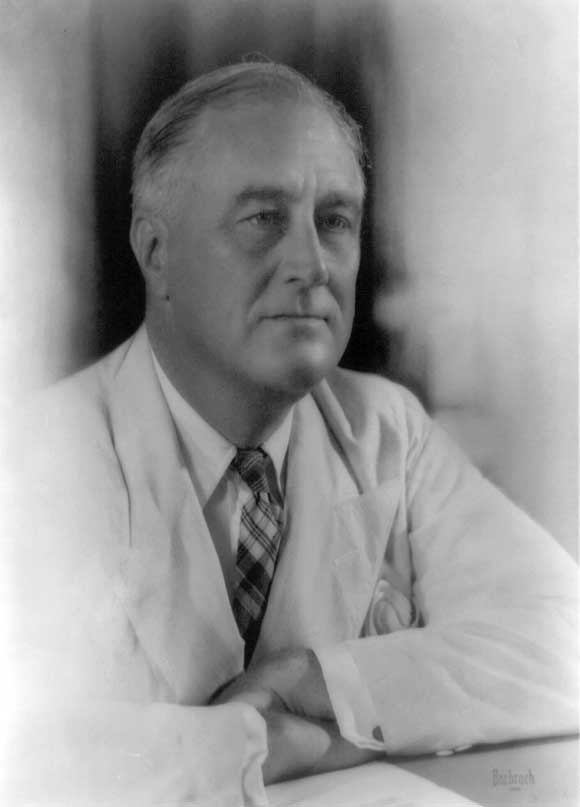
Authorizing Legislation
In August 1939, Congress authorized the director of the census to conduct a national census of housing “in each state, the District of Columbia, Hawaii, Puerto Rico, the Virgin Islands, and Alaska, in the year 1940 in conjunction with, and at the same time, and as part of the population inquiry of the sixteenth decennial census.” The census was “to provide information concerning the number, characteristics (including utilities and equipment), and geographic distribution of dwelling structures and dwelling units in the United States.”
Enumeration
Because the originating legislation came so late in the census planning process and because the nature of the questions was so different from those in the census of population, the housing inquiries in the 1940 census were collected via a separate census. In practice, enumerators collected information for the housing census at the same time they collected information for the population census.
Sampling
One of the major innovations of the 1940 census was the use of advanced statistical techniques, including probability sampling, which had been used only on an experimental basis before. Sampling had been tested in a trial census of unemployment carried out by the Civil Works Administration in 1933-1934 and surveys of retail stores in the same decade, and an official sample survey of unemployment in 1937 that covered about 20,000 households.
Sampling in the 1940 census allowed the addition of a number of demographic questions of enumerated persons without unduly increasing the overall burden on respondents and on data processing. It also made it possible to publish preliminary returns 8 months ahead of the complete tabulations. Sampling also allowed the Census Bureau to increase the number of detailed tables published and review the quality of the data processing with more efficiency.
Several new questions reflected the concerns of the depression years. Along with the new census focusing on the condition of the nation’s housing stock and the need for public housing programs, the 1940 census included questions about employment, unemployment, internal migration and income.
Further Information
- Procedural History of the 1940 Census of Population and Housing [PDF 13.4MB], prepared by Robert Jenkins, The Center for Demography and Ecology, University of Wisconsin, Madison, WI, 1983.
- A wide variety of historical statistics from this and other decades is available in Historical Statistics of the United States: Colonial Times to 1970. It is available as a PDF [74.4MB] or 2-part ZIP file: Part I [52.2MB] | Part II [66.1MB].
- Reports and statistics from the 1940 census
Information provided from Census.gov
Posted in Books & Reading, Census, Education & Training, General, Information Resources, What's Up Doc / Govdocs
Tagged census
Leave a comment
Book Briefs: New University of Nebraska Press Books at the Nebraska Publications Clearinghouse

The Nebraska Publications Clearinghouse receives documents every month from all Nebraska state agencies, including the University of Nebraska Press (UNP). Each month we will be showcasing the UNP books that the Clearinghouse receives. UNP books, as well as all Nebraska state documents, are available for checkout by libraries and librarians, for their patrons, in Nebraska.
Here are the UNP books the Clearinghouse received in January 2020:

Chaucer’s losers, Nintento’s Children, and Other Forays in Queer Ludonarratology Tison Pugh (Series: Frontiers of Narrative)
Tison Pugh examines the intersection of narratology, ludology, and queer studies, pointing to the ways in which the blurred boundaries between game and narrative provide both a textual and a metatextual space of queer narrative potential. By focusing on these three distinct yet complementary areas, Pugh shifts understandings of the way their play, pleasure, and narrative potential are interlinked.
Through illustrative readings of an eclectic collection of cultural artifacts—from Chaucer’s Canterbury Tales to Nintendo’s Legend of Zelda franchise, from Edward Albee’s dramatic masterpiece Who’s Afraid of Virginia Woolf? to J. K. Rowling’s Harry Potter fantasy novels—Pugh offers perspectives of blissful ludonarratology, sadomasochistic ludonarratology, the queerness of rules, the queerness of godgames, and the queerness of children’s questing video games. Collectively, these analyses present a range of interpretive strategies for uncovering the disruptive potential of gaming texts and textual games while demonstrating the wide applicability of queer ludonarratology throughout the humanities.
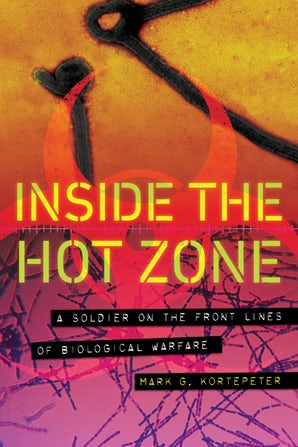
Inside the Hot Zone : A Soldier on the Front Lines of Biological Warfare Mark G. Kortepeter
Inside the Hot Zone is an insider’s account of one of the most dangerous workplaces on earth: the United States Army Medical Research Institute of Infectious Diseases (USAMRIID) in Fort Detrick, Maryland. Retired U.S. Army Col. Mark G. Kortepeter, a leading biodefense expert, recounts his journey from the lecture hall to the role of department chief, to the battlefield, to the Biosafety Level-4 maximum containment lab, and finally, to the corner office.
During Kortepeter’s seven and a half years in leadership at USAMRIID, the United States experienced some of the most serious threats in modern germ warfare, including the specter of biological weapons during the Iraq War, the anthrax letters sent after 9/11, and a little-known crisis involving a presumed botulism attack on the president of the United States. Inside the Hot Zone is a shocking, frightening eye-opener as Kortepeter describes in gripping detail how he and his USAMRIID colleagues navigated threats related to anthrax, botulism, smallpox, Lassa, and Ebola.
Kortepeter crafts a rich and riveting narrative as he wrestles with life-and-death decisions managing biological weapon exposures. The stories are real, but they could just as easily serve as plotlines in popular fiction or Hollywood thrillers. He gives the reader a seat at the table as each crisis unfolds, with an unvarnished and personal perspective on the dangers, the drama, the fear, the frustrations, the irony, and the uncertainty he encountered as a physician in the role of “Biodefender.”

National Pastimes : Cinema, Sports, and Nation Katharina Bonzel (Series: Sports, Media, and Society)
Sports have long fascinated filmmakers from Hollywood and beyond, from Bend It Like Beckham to Chariots of Fire to Rocky. Though sports films are diverse in their approach, style, and storytelling modes, National Pastimes discloses the common emotional and visual cues that belie each sports film’s underlying nationalistic impulses. Katharina Bonzel unravels the delicate matrix of national identity, sports, and emotion through the lens of popular sports films in comparative national contexts, demonstrating in the process how popular culture provides a powerful vehicle for the development and maintenance of identities of place across a range of national cinemas.
As films reflect the ways in which myths of nation and national belonging change over time, they are implicated in important historical moments, from Cold War America to the class dynamics of 1980s Thatcherite Britain to the fragmented sense of nation in post-unification Germany. Bonzel shows how sports films provide a means for renegotiating the boundaries of national identity in an accessible, engaging form. National Pastimes opens up new ways of understanding how films appeal to the emotions, using myth-like constructions of the past to cultivate spectators’ engagement with historical events.
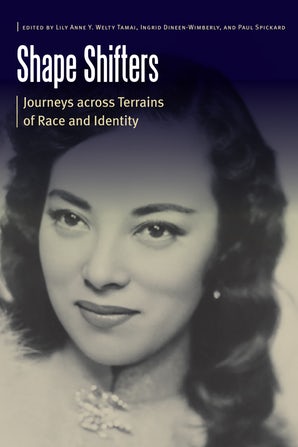
Shape Shifters : Journeys Across Terrains of Race and Identity Edited by Lily Anne Y. Welty Tamai, Ingrid Dineen-Wimberly, and Paul Spickard (Series: Borderlands and Transcultural Studies)
Shape Shifters presents a wide-ranging array of essays that examine peoples of mixed racial identity. Moving beyond the static “either/or” categories of racial identification found within typical insular conversations about mixed-race peoples, Shape Shifters explores these mixed-race identities as fluid, ambiguous, contingent, multiple, and malleable. This volume expands our understandings of how individuals and ethnic groups identify themselves within their own sociohistorical contexts.
The essays in Shape Shifters explore different historical eras and reach across the globe, from the Roman and Chinese borderlands of classical antiquity to medieval Eurasian shape shifters, the Native peoples of the missions of Spanish California, and racial shape shifting among African Americans in the post–civil rights era. At different times in their lives or over generations in their families, racial shape shifters have moved from one social context to another. And as new social contexts were imposed on them, identities have even changed from one group to another. This is not racial, ethnic, or religious imposture. It is simply the way that people’s lives unfold in fluid sociohistorical circumstances.
With contributions by Ryan Abrecht, George J. Sánchez, Laura Moore, and Margaret Hunter, among others, Shape Shifters explores the forces of migration, borderlands, trade, warfare, occupation, colonial imposition, and the creation and dissolution of states and empires to highlight the historically contingent basis of identification among mixed-race peoples across time and space.

Willa Cather and the Arts Edited by Guy J. Renolds (Series: Cather Studies, Vol. 12)
Over the five decades of her writing career Willa Cather responded to, and entered into dialogue with, shifts in the terrain of American life. These cultural encounters informed her work as much as the historical past in which much of her writing is based. Cather was a multifaceted cultural critic, immersing herself in the arts, broadly defined: theater and opera, art, narrative, craft production. Willa Cather and the Arts shows that Cather repeatedly engaged with multiple forms of art, and that even when writing about the past she was often addressing contemporary questions.
The essays in this volume are informed by new modes of contextualization, including the increasingly popular view of Cather as a pivotal or transitional figure working between and across very different cultural periods and by the recent publication of Cather’s correspondence. The collection begins by exploring the ways Cather encountered and represented high and low cultures, including Cather’s use of “racialized vernacular” in Sapphira and the Slave Girl. The next set of essays demonstrates how historical research, often focusing on local features in Cather’s fiction, contributes to our understanding of American culture, from musicological sources to the cultural development of Pittsburgh. The final trio of essays highlights current Cather scholarship, including a food studies approach to O Pioneers! and an examination of Cather’s use of ancient philosophy in The Professor’s House. Together the essays reassess Cather’s lifelong encounter with, and interpretation and reimagining of, the arts.
**All synopses courtesy of University of Nebraska Press (https://www.nebraskapress.unl.edu/)
A History of the Census in the United States : Part 15
The Fifteenth Census: Census Day was April 1, 1930.
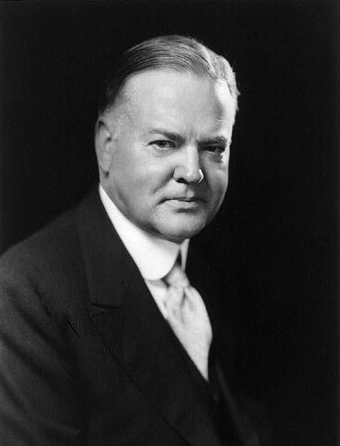
Authorizing Legislation
The Fifteenth Census Act, approved June 18, 1929, authorized “a census of population, agriculture, irrigation, drainage, distribution, unemployment, and mines [to be] taken by the Director of the Census.” This act was the first to specify only general areas to be investigated, leaving the content of specific questions to the discretion of the director. The census encompassed each state, along with Washington, DC, Alaska, Hawaii, and Puerto Rico. The governors of Guam, American Samoa, and the Virgin Islands each completed a census that same year. So did the governor of the Panama Canal Zone.
Crises and Controversies
In the time between the passage of the act and census day, the stock market crashed and the nation plunged into the Great Depression. The public and academics wanted quick access to the unemployment information collected in the 1930 census. The Census Bureau had not planned to process the unemployment information it had collected – which some statisticians considered unreliable – until quite a bit later and was unequipped to meet these demands. When it did rush its data on unemployment out, the numbers it reported were attacked as being too low. Congress required a special unemployment census for January 1931; the data it produced confirmed the severity of the situation.
Intercensal Activity
Congress mandated that another unemployment census be conducted in 1937. This special census was largely voluntary; postal carriers delivered a form to every residential address in the country and those who were unemployed were expected to fill it out and mail it back. This special census is noteworthy because it was an early opportunity for Census Bureau statisticians to experiment with statistical sampling. Two percent of households were delivered a special census questionnaire whose results were used to test the accuracy of the larger census.
Further Information
- A wide variety of historical statistics from this and other decades is available in Historical Statistics of the United States: Colonial Times to 1970. It is available as a PDF [74.4MB] or 2-part ZIP file: Part I [52.2MB] | Part II [66.1MB].
- Reports and statistics from the 1930 Census
Information provided from Census.gov
Posted in Books & Reading, Census, Education & Training, General, Information Resources, What's Up Doc / Govdocs
Tagged census
Leave a comment
Book Briefs: New University of Nebraska Press Books at the Nebraska Publications Clearinghouse
 The Nebraska Publications Clearinghouse receives documents every month from all Nebraska state agencies, including the University of Nebraska Press (UNP). Each month we will be showcasing the UNP books that the Clearinghouse receives. UNP books, as well as all Nebraska state documents, are available for checkout by libraries and librarians, for their patrons, in Nebraska.
The Nebraska Publications Clearinghouse receives documents every month from all Nebraska state agencies, including the University of Nebraska Press (UNP). Each month we will be showcasing the UNP books that the Clearinghouse receives. UNP books, as well as all Nebraska state documents, are available for checkout by libraries and librarians, for their patrons, in Nebraska.
Here are the UNP books the Clearinghouse received in November and December 2019:
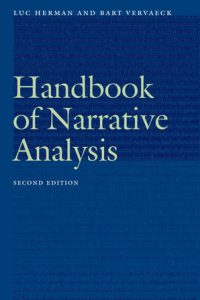 Handbook of Narrative Analysis Luc Herman and Bart Vervaeck (Series: Frontiers of Narrative)
Handbook of Narrative Analysis Luc Herman and Bart Vervaeck (Series: Frontiers of Narrative)
Stories are everywhere, from fiction across media to politics and personal identity. Handbook of Narrative Analysis sorts out both traditional and recent narrative theories, providing the necessary skills to interpret any story. In addition to discussing classical theorists, such as Gérard Genette, Mieke Bal, and Seymour Chatman, Handbook of Narrative Analysis presents precursors (such as E. M. Forster), related theorists (Franz Stanzel, Dorrit Cohn), and a large variety of postclassical critics. Among the latter particular attention is paid to rhetorical, cognitive, and cultural approaches; intermediality; storyworlds; gender theory; and natural and unnatural narratology.
Not content to consider theory as an end in itself, Luc Herman and Bart Vervaeck use two short stories and a graphic narrative by contemporary authors as touchstones to illustrate each approach to narrative. In doing so they illuminate the practical implications of theoretical preferences and the ideological leanings underlying them. Marginal glosses guide the reader through discussions of theoretical issues, and an extensive bibliography points readers to the most current publications in the field. Written in an accessible style, this handbook combines a comprehensive treatment of its subject with a user-friendly format appropriate for specialists and nonspecialists alike.
Handbook of Narrative Analysis is the go-to book for understanding and interpreting narrative. This new edition revises and extends the first edition to describe and apply the last fifteen years of cutting-edge scholarship in the field of narrative theory.
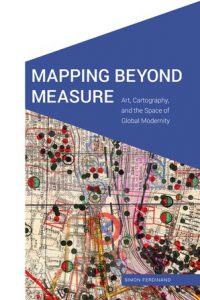 Mapping Beyond Measure : Art, Cartography, and the Space of Global Modernity Simon Ferdinand (Series: Cultural Geographies + Rewriting the Earth)
Mapping Beyond Measure : Art, Cartography, and the Space of Global Modernity Simon Ferdinand (Series: Cultural Geographies + Rewriting the Earth)
Over the last century a growing number of visual artists have been captivated by the entwinements of beauty and power, truth and artifice, and the fantasy and functionality they perceive in geographical mapmaking. This field of “map art” has moved into increasing prominence in recent years yet critical writing on the topic has been largely confined to general overviews of the field.
In Mapping Beyond Measure Simon Ferdinand analyzes diverse map-based works of painting, collage, film, walking performance, and digital drawing made in Britain, Japan, the Netherlands, Ukraine, the United States, and the former Soviet Union, arguing that together they challenge the dominant modern view of the world as a measurable and malleable geometrical space. This challenge has strong political ramifications, for it is on the basis of modernity’s geometrical worldview that states have legislated over social space; that capital has coordinated global markets and exploited distant environments; and that powerful cartographic institutions have claimed exclusive authority in mapmaking.
Mapping Beyond Measure breaks fresh ground in undertaking a series of close readings of significant map artworks in sustained dialogue with spatial theorists, including Peter Sloterdijk, Zygmunt Bauman, and Michel de Certeau. In so doing Ferdinand reveals how map art calls into question some of the central myths and narratives of rupture through which modern space has traditionally been imagined and establishes map art’s distinct value amid broader contemporary shifts toward digital mapping.
 The Mysterious Sofia : One Woman’s Mission to Save Catholicism in Twentieth-Century Mexico Stephen J.C. Andes (Series: The Mexican Experience)
The Mysterious Sofia : One Woman’s Mission to Save Catholicism in Twentieth-Century Mexico Stephen J.C. Andes (Series: The Mexican Experience)
Who was the “Mysterious Sofía,” whose letter in November 1934 was sent from Washington DC to Mexico City and intercepted by the Mexican Secret Service? In The Mysterious Sofía Stephen J. C. Andes uses the remarkable story of Sofía del Valle to tell the history of Catholicism’s global shift from north to south and the importance of women to Catholic survival and change over the course of the twentieth century. As a devout Catholic single woman, neither nun nor mother, del Valle resisted religious persecution in an era of Mexican revolutionary upheaval, became a labor activist in a time of class conflict, founded an educational movement, toured the United States as a public lecturer, and raised money for Catholic ministries—all in an age dominated by economic depression, gender prejudice, and racial discrimination. The rise of the Global South marked a new power dynamic within the Church as Latin America moved from the margins of activism to the vanguard.
Del Valle’s life and the stories of those she met along the way illustrate the shared pious practices, gender norms, and organizational networks that linked activists across national borders. Told through the eyes of a little-known laywoman from Mexico, Andes shows how women journeyed from the pews into the heart of the modern world.
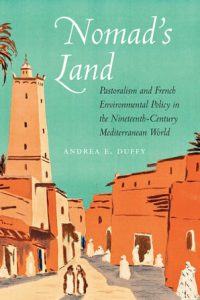 Nomad’s Land : Pastoralism and French Environmental Policy in the Nineteenth-Century Mediterranean World Andrea E. Duffy (Series: France Overseas –Studies in Empire and Decolonization)
Nomad’s Land : Pastoralism and French Environmental Policy in the Nineteenth-Century Mediterranean World Andrea E. Duffy (Series: France Overseas –Studies in Empire and Decolonization)
During the nineteenth century, the development and codification of forest science in France were closely linked to Provence’s time-honored tradition of mobile pastoralism, which formed a major part of the economy. At the beginning of the century, pastoralism also featured prominently in the economies and social traditions of North Africa and southwestern Anatolia until French forest agents implemented ideas and practices for forest management in these areas aimed largely at regulating and marginalizing Mediterranean mobile pastoral traditions. These practices changed not only landscapes but also the social order of these three Mediterranean societies and the nature of French colonial administration.
In Nomad’s Land Andrea E. Duffy investigates the relationship between Mediterranean mobile pastoralism and nineteenth-century French forestry through case studies in Provence, French colonial Algeria, and Ottoman Anatolia. By restricting the use of shared spaces, foresters helped bring the populations of Provence and Algeria under the control of the state, and French scientific forestry became a medium for state initiatives to sedentarize mobile pastoral groups in Anatolia. Locals responded through petitions, arson, violence, compromise, and adaptation. Duffy shows that French efforts to promote scientific forestry both internally and abroad were intimately tied to empire building and paralleled the solidification of Western narratives condemning the pastoral tradition, leading to sometimes tragic outcomes for both the environment and pastoralists.
 Pathologies of Love : Medicine and the Woman Question in Early Modern France Judy Kem (Series: Women and Gender in the Early Modern World)
Pathologies of Love : Medicine and the Woman Question in Early Modern France Judy Kem (Series: Women and Gender in the Early Modern World)
Pathologies of Love examines the role of medicine in the debate on women, known as the querelle des femmes, in early modern France. Questions concerning women’s physical makeup and its psychological and moral consequences played an integral role in the querelle. This debate on the status of women and their role in society began in the fifteenth century and continued through the sixteenth and, as many critics would say, well beyond. In querelle works early modern medicine, women’s sexual difference, literary reception, and gendered language often merge. Literary authors perpetuated medical ideas such as the notion of allegedly fatal lovesickness, and physicians published works that included disquisitions on the moral nature of women.
In Pathologies of Love, Judy Kem looks at the writings of Christine de Pizan, Jean Molinet, Symphorien Champier, Jean Lemaire de Belges, and Marguerite de Navarre, examining the role of received medical ideas in the querelle des femmes. She reconstructs how these authors interpreted the traditional courtly understanding of women’s pity or mercy on a dying lover, their understanding of contemporary debates about women’s supposed sexual insatiability and its biological effects on men’s lives and fertility, and how erotomania or erotic melancholy was understood as a fatal illness. While the two women who frame this study defended women and based much of what they wrote on personal experience, the three men appealed to male authority and tradition in their writings.
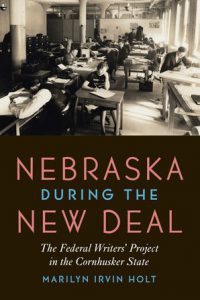 Nebraska During the New Deal : The Federal Writers’ Project in the Cornhusker State Marilyn Irvin Holt
Nebraska During the New Deal : The Federal Writers’ Project in the Cornhusker State Marilyn Irvin Holt
As a New Deal program, the Federal Writers’ Project (FWP) aimed to put unemployed writers, teachers, and librarians to work. The contributors were to collect information, write essays, conduct interviews, and edit material with the goal of producing guidebooks in each of the then forty-eight states and U.S. territories. Project administrators hoped that these guides, known as the American Guide Series, would promote a national appreciation for America’s history, culture, and diversity and preserve democracy at a time when militarism was on the rise and parts of the world were dominated by fascism.
Marilyn Irvin Holt focuses on the Nebraska project, which was one of the most prolific branches of the national program. Best remembered for its state guide and series of folklore and pioneer pamphlets, the project also produced town guides, published a volume on African Americans in Nebraska, and created an ethnic study of Italians in Omaha. In Nebraska during the New Deal Holt examines Nebraska’s contribution to the project, both in terms of its place within the national FWP as well as its operation in comparison to other state projects.
 Xurt’an : The End of the World and Other Myths, Songs, Charms, and Chants by the Northern Lacandones of Naha’ Suzanne Cook (Series: Native Literatures of the Americas and Indigenous World Literatures)
Xurt’an : The End of the World and Other Myths, Songs, Charms, and Chants by the Northern Lacandones of Naha’ Suzanne Cook (Series: Native Literatures of the Americas and Indigenous World Literatures)
Xurt’an (the end of the world) showcases the rich storytelling traditions of the northern Lacandones of Naha’ through a collection of traditional narratives, songs, and ritual speech. Formerly isolated in the dense, tropical rainforest of Chiapas, Mexico, the Lacandon Maya constitute one of the smallest language groups in the world. Although their language remains active and alive, their traditional culture was abandoned after the death of their religious and civic leader in 1996. Lacking the traditional contexts in which the culture was transmitted, the oral traditions are quickly being forgotten.
This collection includes creation myths that describe the cycle of destruction and renewal of the world, the structure of the universe, the realms of the gods and their intercessions in the affairs of their mortals, and the journey of the souls after death. Other traditional stories are non-mythic and fictive accounts involving talking animals, supernatural beings, and malevolent beings that stalk and devour hapless victims. In addition to traditional narratives, Xurt’an presents many songs that are claimed to have been received from the Lord of Maize, magical charms that invoke the forces of the natural world, invocations to the gods to heal and protect, and work songs of Lacandon women, whose contribution to Lacandon culture has been hitherto overlooked by scholars. Women’s songs offer a rare glimpse into the other half of Lacandon society and the arduous distaff work that sustained the religion. The compilation concludes with descriptions of rainbows, the Milky Way as “the white road of Our Lord,” and an account of the solstices.
Transcribed and translated by a foremost linguist of the northern Lacandon language, the literary traditions of the Lacandones are finally accessible to English readers. The result is a masterful and authoritative collection of oral literature that will both entertain and provoke, while vividly testifying to the power of Lacandon Maya aesthetic expression.
**All synopses courtesy of University of Nebraska Press (https://www.nebraskapress.unl.edu/)


